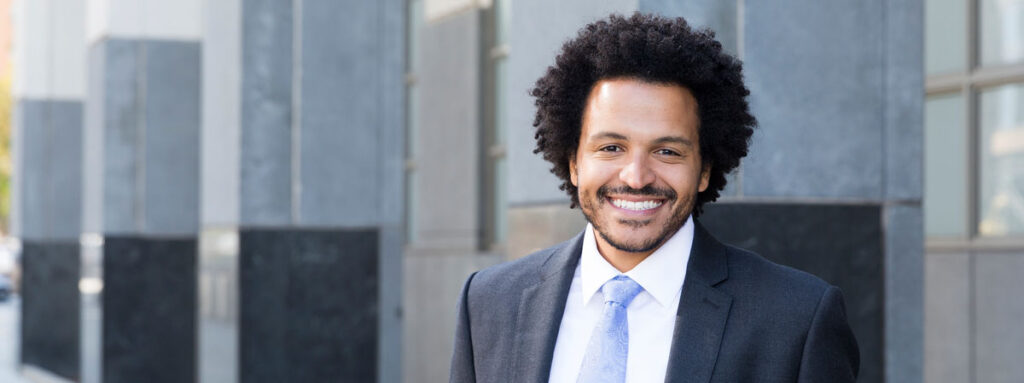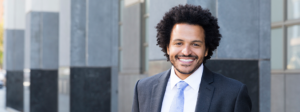Jonathan Santos Silva of Rapid City, South Dakota was recently named one of TNTP’s 2019 Bridge Fellows. As a Fellow, Jonathan will spend the year building a transformational leadership institute to prepare culturally responsive educators—bringing students, families, and communities together to incubate ideas for disrupting the educational inequities Indigenous kids currently experience. I sat down with Jonathan to learn about his path to the Bridge Fellowship.
You describe yourself as a career educator. What is your story when it comes to your time in education?
When I talk to teachers, I make sure they understand I was a teacher first. I think that's important because sometimes in education you have these “experts” who have not actually worked in schools, but they’ve read about schools. And when someone like that comes to a teacher with recommendations and criticisms, it doesn’t mean much. I’m honest with teachers about my time in the classroom, too. I tell them the truth: that I was not your typical “good teacher.” I didn’t have a 180-day plan from day one, and I was not as skilled at breaking down the standards as many of my peers. But what I was good at was building relationships.
Because of the strong bonds I created with my students, they were invested in me and therefore became interested in the material. The trust students had in me—and the trust and high expectations I had for them—motivated them to put their all into their academics.
Understanding who my kids and their families are continues to drive my work to this day. It’s a theme no matter who I'm talking with. I don't necessarily get caught up telling people my title or role but focus more on the fact that I want to do what’s best for students and families.
What do you tell folks who aren’t teachers when describing your experience?
A few years back, I had the opportunity to spend a year designing and founding a high school and serving as its principal. I wanted to create a school since I was in my early 20s—I was inspired by Oprah and the school she founded in South Africa. But I ended up struggling with the network my school was part of. They wanted me to be stricter than I was comfortable being, particularly when it came to discipline. So, I left, and for the past three years, I’ve been processing the experience and flying under the radar.
To me, the role of the principal is one of the seats that’s least understood, especially in terms of the pressures principals face. Ideally, principals would focus on supporting instruction and making sure teachers are growing and have everything that they need—basically doing the blocking and tackling so they can do phenomenal work in the classroom. But that’s not the reality. I spent probably more time writing reports or sitting in meetings or being called out of my building to the central office.
So, more than anything, when describing my time working in education, I talk about being a teacher and being a principal. But again, other experiences I’ve had add color and context to who I am. Specifically, having opportunities to take what I learned from those school-based experiences into roles where I’ve supported schools from the outside has been critical.
How did you come to work with Indigenous students?
After graduating from college, I went into business. I wanted to make money. I was miserable and quit my job to move to California and live with family. I got a job renting cars with Enterprise, and one day happened to rent a car to a preacher who ultimately inspired me to follow my passion. I joined his church and became very drawn to the concept of service work.
A friend kept bugging me to apply to Teach for America after he got in. It seemed exciting, and I started researching the different regions I could teach.
What did I know about reservations? Pretty much nothing. But it created an itch in my mind, and I prioritized South Dakota when I applied—because of its vibrant Indigenous communities. I got the placement, and it was an amazing two years. What stands out is all the great relationships I built. That’s why I'm back: all the people are still here, and I want to work with them.
Why is this work important to you?
After undergrad, before I was even considering earning a master’s in education, when I was working for my alma mater as a financial aid advisor, I was offered a job teaching English in Japan. I was excited since I grew up doing martial arts and was fascinated by Japanese culture from afar. When I applied for the position, I had dreads down to my shoulders, and I went as far as cutting them to work in a professional setting in Japan. At the same time, I got recruited to lead a program for Black and Latinx youth in my alma mater. The recruiter said, “You can go to Japan and teach students you don’t know. Or you can stay here and help Black and Latinx kids go to college.” And my faith told me I needed to work with my own community—the community I knew best.
I identify as Black and Black first, and then Cape Verdean if you want to get specific. My wife is Cambodian. I want my kids to grow up around Blackness and see the beauty, power, and excellence of our people. So, sometimes I feel guilty working in a community where kids don’t have role models who look like them.
To be clear, I don’t feel guilty working in an Indigenous community instead of a Black community. That said, I would feel that way working in a mostly white or affluent community, but I do not feel that here. What I do feel at times is guilt for not raising my own children in a place where their cultures figure prominently. Aside from my wife and I, they do not see Black, Cape Verdean, and Cambodian culture reflected in any way. I miss that, but at the same time, I believe they are fortunate to grow up in Indigenous communities where there are many Indigenous teachers, principals, and government officials.
What drives me to work in Indigenous communities is I am deeply troubled by the reality that, unfortunately, for whatever reason, when we think about opportunity gaps or schools that want to improve but don't have the resources, we rarely talk about schools Indigenous youth attend—especially on reservations. As an African American, I appreciate that we talk about schools where Black students are, where Latinx students are, and where immigrant populations concentrate. Indigenous kids are as creative, as intelligent, as amazing, as talented as kids anywhere. But they are a forgotten part of the conversation.
You’ve mentioned a lack of proof-point schools, especially in Indigenous communities in South Dakota. Can you talk more about what you’ve seen?
I would say, in South Dakota, almost all the manifestations of poverty you see in an urban center, you see in our schools. Furthermore, there are the added challenges that come with being rural and isolated from colleges, white collar jobs, and non-profit programs.
That's a big part of why we don’t have proof-point schools. Most of the schools on reservations I know of are doing excellent work, but it's not just the school's responsibility to bring opportunities to students. In a more urban setting, you might have college partnerships, partners from the community, mentors from big employers; people who are supporting your school, donating to your school, and bringing their expertise and their knowledge to help you solve problems.
What are some of the other difficulties?
There is also the challenge of recruiting and maintaining great teachers. I’ve seen jobs stay vacant for years. It's not that you don't have great people, we do. The isolation that makes it hard to get resources for our schools also makes it difficult to attract teachers from other places. Also, because of the tribal college system, potential teachers from the reservation might have to leave to earn their degree. And if they don’t want to leave the community, for family reasons or others, it can be challenging for them to get the training they need. This is part of what I want to address with my Bridge project.
Frankly, I don’t believe the answer is bringing teachers from the outside. The reality is, it takes so long for local teachers to earn their degree, that bringing in teachers from the outside seems like a stop gap. But that’s challenging, too. There is no easy answer, and we have to come up with more comprehensive and creative solutions.
How does this connect to your Bridge project?
I am building a transformational leadership institute that will prepare culturally responsive educators. But this will all be focused on the needs of the people we serve, and bring students, families, and communities together to incubate ideas—all with the goal of disrupting the educational inequities Indigenous kids endure.
What expectations do you have for the fellowship and what do you hope to get out of it?
This is an incredible organization with a lot of resources saying, “Here’s your shot. You wanted it. You dreamed of it. You got it. We're giving you the runway.”
I'm not worried about a darn thing this year. I'm taken care of. My family is taken care of. I'm part of a vibrant and helpful community. I want to work with TNTP to build on all of this, as well as my experience in schools and classrooms, so teachers, school leaders, and education experts want to come here and do the work to give kids great experiences in school, and out. I want to help create the conditions to reverse the challenges schools like those in my town have hiring and retaining great teachers. And I want the work to be sustainable.
If we can do it in South Dakota and provide a model to move communities in ways that honor their history and lift up local leadership and expertise, I think it can be done anywhere. We have a really unique opportunity. We're a small state, but we cover a large geography: we have tiny schools in the rural areas, large schools in the cities, and everything in between. If we can demonstrate efficacy, sustainability, and success in South Dakota, we’ll have lessons we can apply all over the country.
So, that's what the fellowship is doing for me. It's giving me the opportunity to learn, and to build new relationships that deepen old relationships and start to make my vision a reality.





